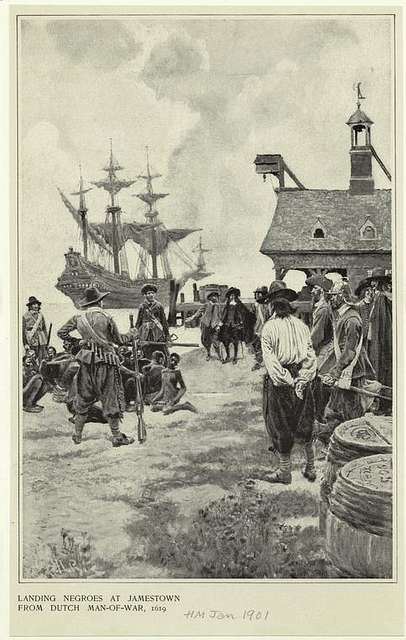
Introduction to Lesson 5
As Donna M. Cox, professor of music at Dayton University, writes, "From the moment of capture, through the treacherous middle passage, after the final sale and throughout life in North America, the experience of enslaved Africans who first arrived at Jamestown, Virginia … was characterized by loss, terror, and abuse." Slavery remained a common practice and legal in the United States from 1619 until December 1865. As Cox writes, "From this tragic backdrop one of the most poignant American musical genres, the Negro spiritual, was birthed" (Cox 2020). Out of this plight of oppression, the enslaved African in America retained their innate cultural heritage of music to express their innermost soul. Most pronounced of these was their expression of sorrows, joy, hope, and longing for a better life."
African American Spiritual
Donna M. Cox
"From the moment of capture, through the treacherous middle passage, after the final sale and throughout life in North America, the experience of enslaved Africans who first arrived at Jamestown, Virginia...was characterized by loss, terror, and abuse."
SpiritualsReligious music of African Americans during slavery. sometimes called slave songs, jubilees (because of the bright ray of hope mentioned in each song), or sorrow songs (because of its dealing with sorrow and despair), as Cox notes-were an outgrowth of the calls, cries, moans, and hollers mentioned in Lesson 4. Just like calls, cries, and moans, spirituals came out of the Black experience in the United States from enslavement to the Emancipation Proclamation of 1863 (Cox 2020).
| SPIRITUAL VERSUS HYMN | |
|---|---|
| Spiritual: Form | Hymn: Form |
| Call-response: A song or performance practice in which a singer or instrumentalist makes a musical statement that is answered by another soloist, instrumentalist, or group - based on Christian religious values. | Metrical compositions in strophic form, typically eight bars or rhyming couplets, loosely based on biblical scripture. |
Figure 5.1 Spiritual Versus Hymn
A style having emerged during enslavement, this genre symbolized the slave population's unique expression of Christian religious values and ideals tempered by the social, cultural, and physical experience of prolonged involuntary servitude. Spirituals, as described by White Americans in their early encounters with the genre, departed radically from the form and performance style associated with the Protestant hymnsMetrical compositions in strophic form, typically eight bars of rhyming couplets, loosely based on biblical scripture. and psalms to which slaves were introduced in North America.
Spirituals were not hymns, as they were frequently referenced by observers. And although both enslaved and free Blacks undoubtedly became familiar with protestant hymnody, the creation of the spiritual was simply the errant attempt of an unlearned population to reproduce repertoire in the hymn style. As figure 5.1 states, the defining structure of most spirituals was call-and-responseA song structure of performance practice in which a singer or instrumentalist makes a musical statement that is answered by another soloist, instrumentalist, or group. The statement and answer sometimes overlap. Also called antiphony and call-and-response., but some were repeated lines with a concluding phrase, a pattern of musical organization that was ubiquitous in the regions of West and Central Africa from which the slave population originated. Demonstrative behaviors such as handclapping, body movement, and unbridled displays of religious ecstasy were also commonplace markers of an African-inspired Christianity.
Walk Together Children
O, walk together children
Don't you get weary
Walk together children
Don't you get weary
Walk together children
Don't you get weary
There's a great camp meeting in the Promised Land

Certainly Lord - ASBC Male Chorus [ 00:00-00:00 ]
A great example of this is the spiritual "Certainly, Lord". The leader excitedly queries, "Have you got good religion?" and others jubilantly respond, Certainly, Lord . Using repetition and improvisation, the conversation continues to build until everyone exclaims, "Certainly, certainly, certainly, Lord!"
Cultural memory played an important role in fashioning the spiritual as a uniquely American product designed to meet the very special needs-religious and cultural-of a disenfranchised people who refused to be defeated or destroyed by the experience of protracted human bondage in a country that proclaimed a link between liberty and happiness. The birthing of the spiritual symbolized a spirit of freedom-the underlying conscious will of enslaved Africans to express themselves in ways that reflected who they were as a people living far from home in a distant land.


